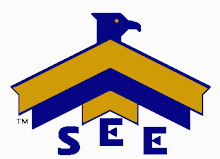Leading other leaders. Some people compare it to herding cats. Some people describe the “which way did they go? I must know because I am their leader” paradox. Others will tell you that it is the most frustrating, but yet most rewarding part of the leadership equation.
Dr. Paul Hersey probably best described the phenomenon of leading other leaders in his work on Situational Leadership. Dr. Hersey clearly identified different skill sets related to managing and leading people based on their skill set and based on the particular leadership situation. His groundbreaking work identified some of the possible disconnects when leaders utilize the same skill set to manage leaders as they do when they supervise entry level workers. In his model, when leading leaders, you can no longer be directive, use a cookie cutter approach and overly define the process details and steps.
Of the additional tactics to lead leaders, fuzziness may be the most important. Although we may have perfect clarity on an end result and how it looks and feels, we must allow our emerging leaders the opportunity to add their clarity. This is an extremely important step that transfers ownership of a project or idea. If we fill in all of the details, it will always be our idea and our process. If we allow our subordinate leaders to fill in the details, the process becomes theirs. It also has great impact to stimulate their creative and systemic thinking.
A subset tactic that is closely related to fuzziness is polluting the soup. Some of you have heard this presented in just a little different way but the message is the same. Polluting the soup is leading with your idea and then requesting other suggestions and input. Sounds okay on the surface, but unfortunately, when your idea is articulated, it will greatly diminish the other input from subordinate leaders. The effective leader will utilize the greatly unappreciated skill of keeping quiet and letting the subordinate leader or leaders play the ideas and suggestions.
Prepare for the curiosity of three year olds. If you have a problem in answering questions and responding to the “why” query, you may not be ready to lead other leaders. If your response pattern includes “because I said so”, “because it has always been that way” or even “it is what it is”, you will need to change your approach. New and emerging leaders will question and challenge. Like kids, it is what they do. Brushing it off produces a future eerie silence that replicates the status quo. Answering, as best you can, produces innovative leaders that balance the possibilities with the realities.
The presentation, even subtly, of opportunities to subordinate and emerging leaders is a great way to evaluate talent and even test drive and motivation. When an opportunity is presented, do the leaders run with it or do they require pushing? Do they pick up on the clues and react without any follow-up needed? Do they personalize the project or idea? Do they continually run it back to you for validation or do they shoot for the end result? Lots of questions yet the answers become very telling about the skill set and readiness of the leader that you are guiding.
Feeding opportunities also allows you to see if any of your leaders are willing to get a little dirty. It is very telling when an emerging leader sacrifices comfort and personal vanities in order to achieve the objectives of the opportunity.
Another critical element in leading leaders is allowing them the opportunity to fail. By far and away this is the most challenging facet for many of us. To allow someone the chance to stub their toe is pretty priceless and more valuable than any other type of learning. Even with our experience and depth of knowledge, until they try it their way, they will never be satisfied. It takes a great deal of leadership maturity to allow others to fail and be there to pick them up and restore their desire to achieve.
Let the cat rodeo begin.
Subscribe to:
Post Comments (Atom)






No comments:
Post a Comment